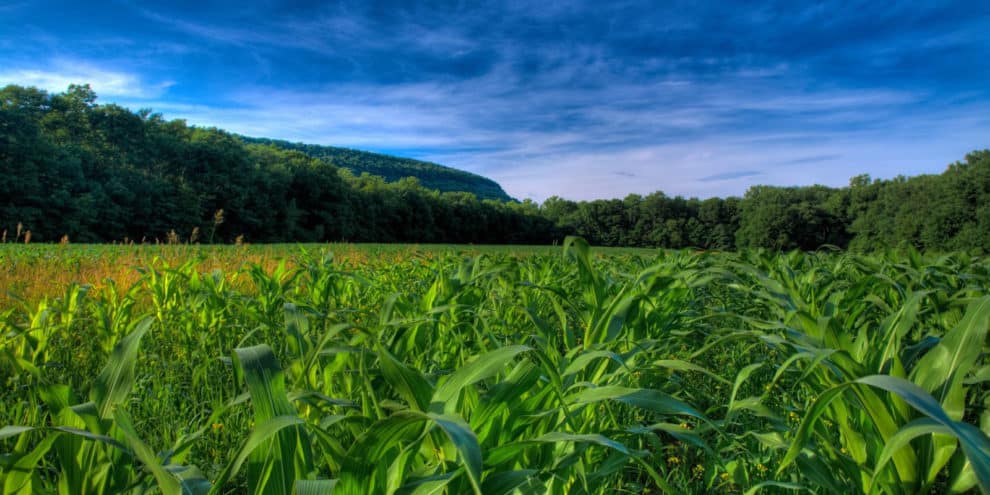As I write this morning, agricultural producers, commodity traders and the agribusiness sector are waiting with bated breath for United State Department of Agriculture’s January crop reports. A total of four reports will be released today but the two most important being the Annual Production Summary and Quarterly Grain Stocks Report. According to many agricultural economists these reports will broadly shape the value of the traded commodity pricing for grain markets this winter. To an agricultural commodity trader, these reports will have immediate impacts on the trading volume and pricing of grain markets while serving to influence the billions of dollars annually traded through the agricultural financial markets. These financial markets ultimately, however, hinge on having the land to grow and produce these commodities, and it is interesting to witness locally through my own work and research how land prices are responding to factors like grain prices and other influential factors.
In Iowa, recently a farm commanded a $17,000 per acre price tag for 373 acres with no commercial or residential development potential. Yes, impressive indeed and I am confident this level of pricing would have significant impact on land sales if we were to see this type of value for farmland on the Eastern Shore. I can hear my phone start to ring now with willing sellers ready to line up.
According to the report written by Marcia Zarley Taylor, Executive Editor of DTN, writing for progressivefarmer.com, she reported this sale was more than $3600 an acre over the analysis of a senior local appraiser familiar with the transaction. This price per acre is also 70% higher over the national average of farmland values as reported in November 2012 according to Taylor. While one sale is not indicative of the full market place in the state of Iowa, it is fair to say that in the Corn Belt land buyers are quite bullish and, according to market reports, it will remain so for some time. What is really behind this increase in the Corn Belt and the Midwest is clearly a fair question.
Factors influencing these values include, most notably, high grain prices, but also low interest rates and national farm and tax policy, both of which were reshaped through the Fiscal Cliff legislation Congress recently passed. It is clearly recognized there remains much on the legislative table that may continue to shape national tax policy. The Farm Bill has been extended for only another 9 months, so there are still fluid factors remaining that will influence the bullish nature of the current land market both in the Midwest and here on the Eastern Shore of Maryland.
Recently, each of these factors were analyzed in detail through an article published in the Journal of American Society for Farm Managers and Rural Appraisers by Steven Blank, an Agricultural Economist from Virginia Tech. In the article, he pointed to energy policy relating to ethanol and historically low interest rates as being the two most influential factors today shaping farmland value. He further stated that changes in federal policy towards ethanol or increasing interest rates would likely be a critical factor in changing current land values in the Midwest and other parts of the country. These factors may however have less of an impact on our market place in Maryland, as Mr. Blank’s concluding factors point towards the influence of “urban areas” on farmland.
Mr. Blank suggested that perhaps the most influential factor in agricultural land values today and historically is the proximity of farmland to urban influences. This point was also recently highlighted in a nationwide study published by USDA in February of 2012. The findings from the study conducted through statistical analysis of land values as it relates to non-farm related factors, yielded significant findings in the increase of farmland values to the proximity of population centers. The study revealed, “… as one moves farther from a population center, the average farm real estate value per acre declines regardless of population size.” The impact of urban centers quickly changes after the 10 mile radius from a town according to the study. On the Eastern Shore this urban influence effect on farmland value likely influences the majority of the Eastern Shore as our small towns are scattered throughout the Shore. To this point, USDA only recognizes 551 counties nationwide which meet the definition of rural status of not being influenced by any urban center.
These factors may or may not seem obvious to most but according to Mr. Blank’s research he states that the, “traditional theory that farmland values are influenced primarily by the land’s ability to generate profits from agricultural production,” may not always hold true for areas with increasing rates of development and urban influence.
This urban influence has been witnessed in our market place on the Eastern Shore and continues to be a factor in the analysis of land value even now as development has slowed. Putting this in the context of the new tier system established through the State of Maryland’s new septic regulations, which are being implemented across the State, the future impact of urban influence on land value may be more measured as land will be more restricted to develop.
Today’s land market is clearly influenced by a range of issues from the price of corn to given zoning regulations, yet it is difficult to pin on any single influence. Above all, one factor remains true with land and that is its limited supply and the economic function of scarcity which drives the value of any asset. As the old saying goes, they are not making any more of it and that alone will continue to make land a valued asset for farmers and investors alike.
This content may not be used or reproduced in any manner whatsoever, in part or in whole, without written permission of LANDTHINK. Use of this content without permission is a violation of federal copyright law. The articles, posts, comments, opinions and information provided by LANDTHINK are for informational and research purposes only and DOES NOT substitute or coincide with the advice of an attorney, accountant, real estate broker or any other licensed real estate professional. LANDTHINK strongly advises visitors and readers to seek their own professional guidance and advice related to buying, investing in or selling real estate.










Add Comment